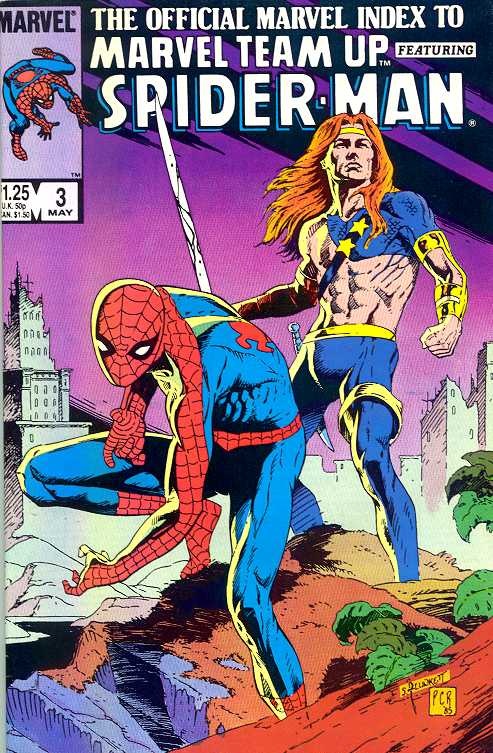|
A few prompts from Jim (below), got Sandy to revisit his work on 1986's "The Official Marvel Index to Marvel Team-Up" #3.
Sandy: Thinking back, it's hard to remember how I got many of my jobs for Marvel. Most freelancers of the day learned that finding a pretext to hang out in an editor's office was a pretty effective way to snag a job. In other words, just try and place yourself in the way of an editor who's wandering the halls, looking for an artist to take an assignment. Like shooting the breeze with Carl Potts when Al Milgrom sticks his head in the office. Al: "Oh, I was thinking of giving you call." Me: "Yeah?" Al: "Yeah, a got a job you might like." Did Al really mean to call me? Most certainly, yes. Would he have remembered to if I hadn't hanging around with Carl. A lot more doubtful. This was a pretty good time at Marvel. The Direct Sales market was really taking off, editors were more willing to experiment now they were aiming at an older, more sophisticated audience, the company was still relatively small and since it's profits were still modest, the corporate culture hadn't descended yet. A pretty relaxed atmosphere. To me, Steve Ditko's vision of Spider-Man is the only one the matters. But that's not surprising since most everyone is attached to the version of a character they first discover in comics. There's a large and vocal generation of readers who feel no one could ever surpass John Romita on the title. Others feel that way about Todd McFarland. They're all wrong, of course. Ditko's dystopian view of teenage life and society gave the book a depth it never achieved again. His Peter Parker really spoke to the pain, frustration and loneliness many of the readers were experiencing as they struggled their way through adolescence. |
BLOGaboutPlunkett-fan Jim Harris interviewing Sandy about past and present projects. Archives
January 2021
Categories
All
|

 RSS Feed
RSS Feed